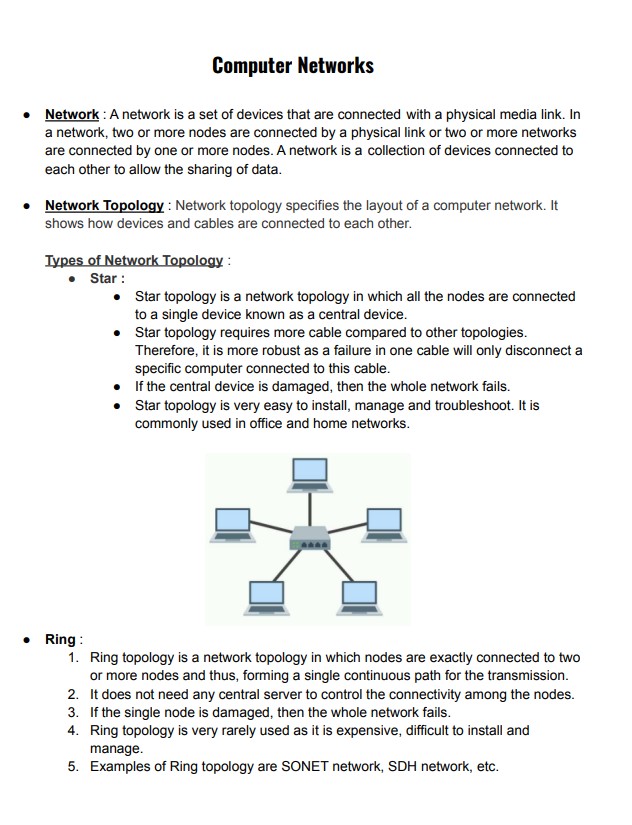Computer Networks
Summary:
The Computer Networks notes offer a comprehensive introduction to the world of computer networking, covering topics such as network protocols, LAN, WAN, security, routing, switching, and more. Suitable for both beginners and advanced learners, the notes provide clear explanations, diagrams, and practical examples. Whether you’re new to networking or a seasoned pro, these notes offer valuable insights into modern network principles and technologies.
Excerpt:
Computer Networks
● Network: A network is a set of devices that are connected with a physical media link. In a network, two or more nodes are connected by a physical link, or two or more networks are connected by one or more nodes. A network is a collection of devices connected to each other to allow the sharing of data.
● Network Topology: Network topology specifies the layout of a computer network. It shows how devices and cables are connected to each other.
Types of Network Topology:
● Star :
● Star topology is a network topology in which all the nodes are connected to a single device known as a central device.
● Star topology requires more cable compared to other topologies. Therefore, it is more robust as a failure in one cable will only disconnect a specific computer connected to this cable.
● If the central device is damaged, then the whole network fails.
● Star topology is very easy to install, manage and troubleshoot. It is commonly used in office and home networks.
Ring:
1. Ring topology is a network topology in which nodes are exactly connected to two or more nodes and thus, forming a single continuous path for the transmission.
2. It does not need any central server to control the connectivity among the nodes.
3. If the single node is damaged, then the whole network fails.
4. Ring topology is very rarely used as it is expensive, difficult to install and manage.
5. Examples of Ring topology are SONET network, SDH network, etc.


Reviews